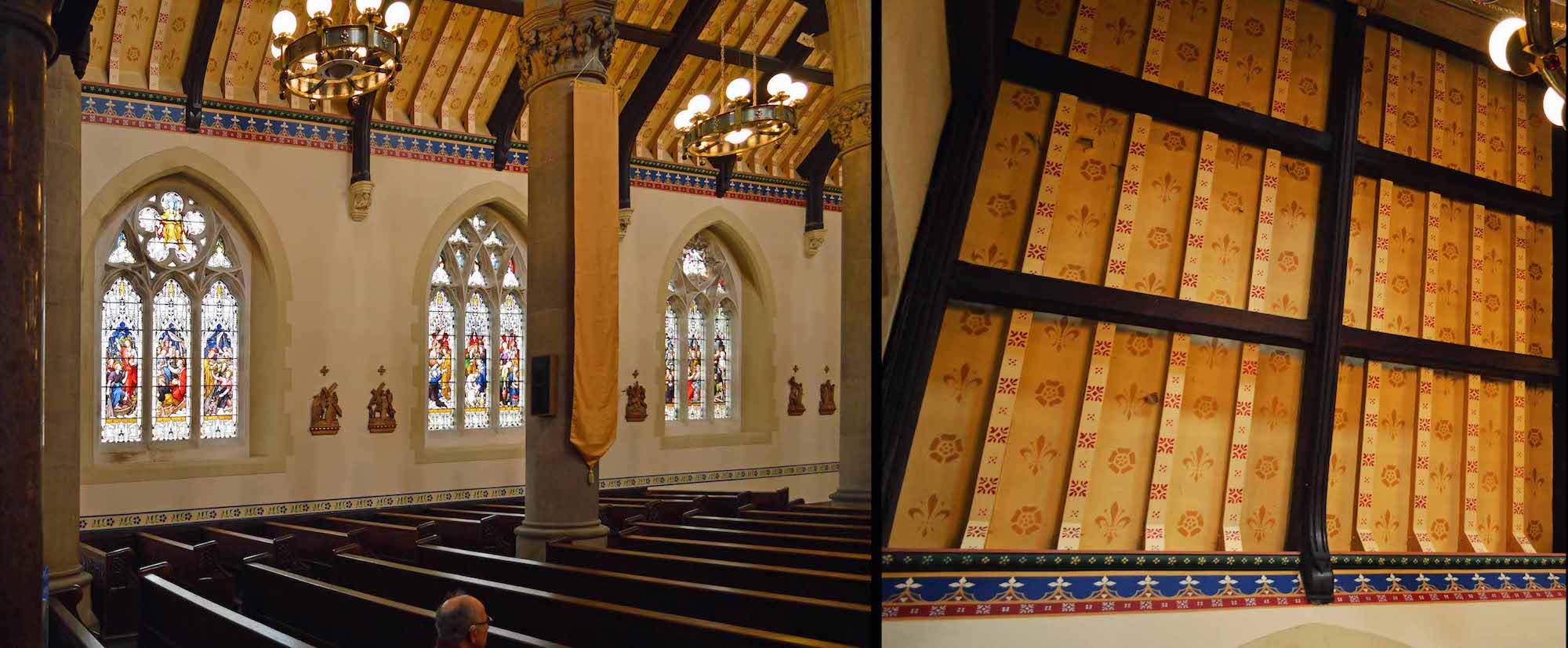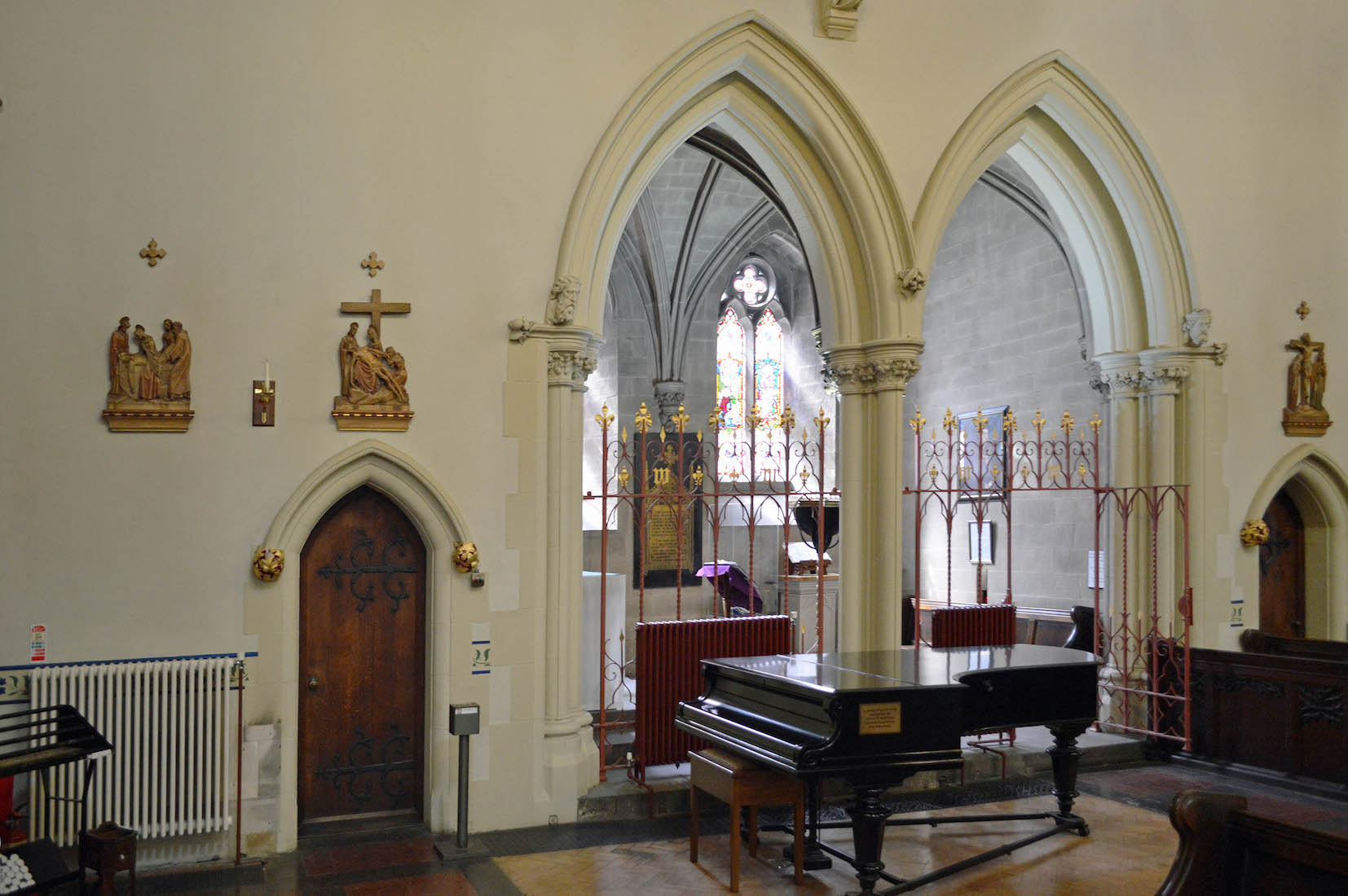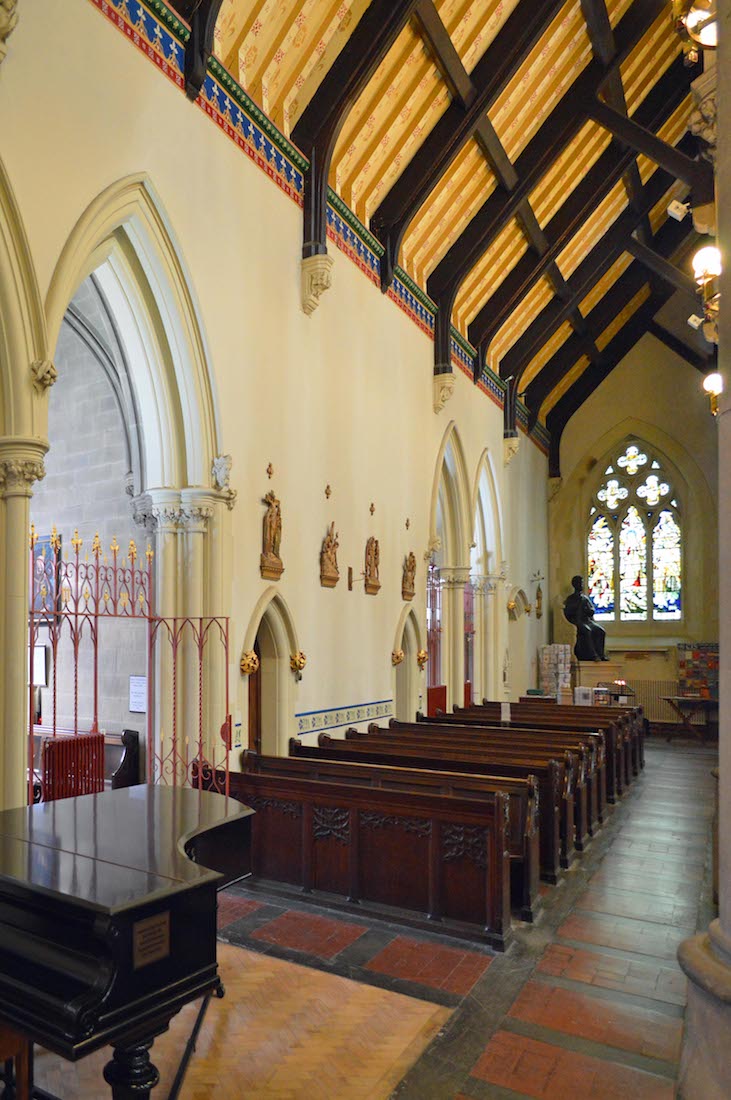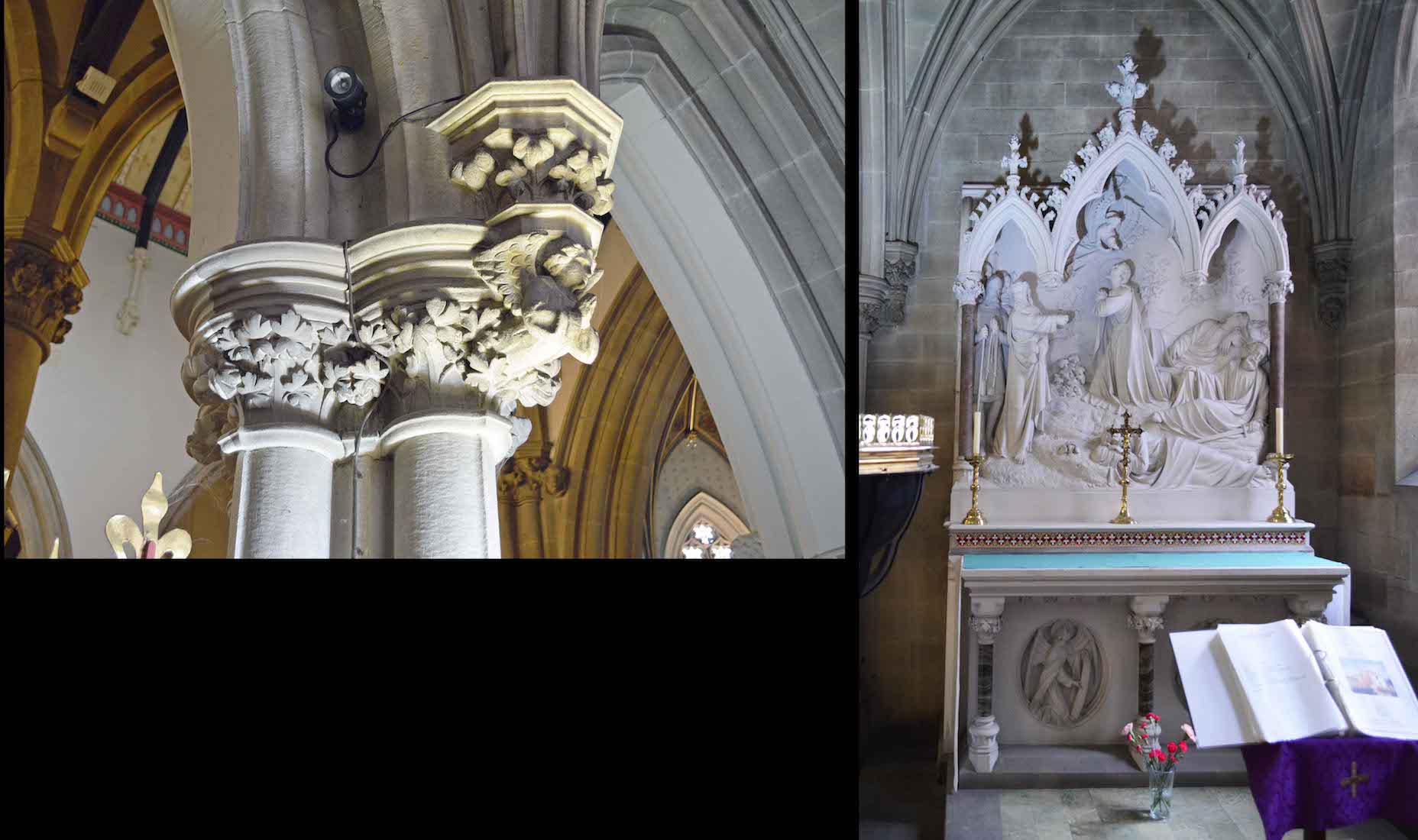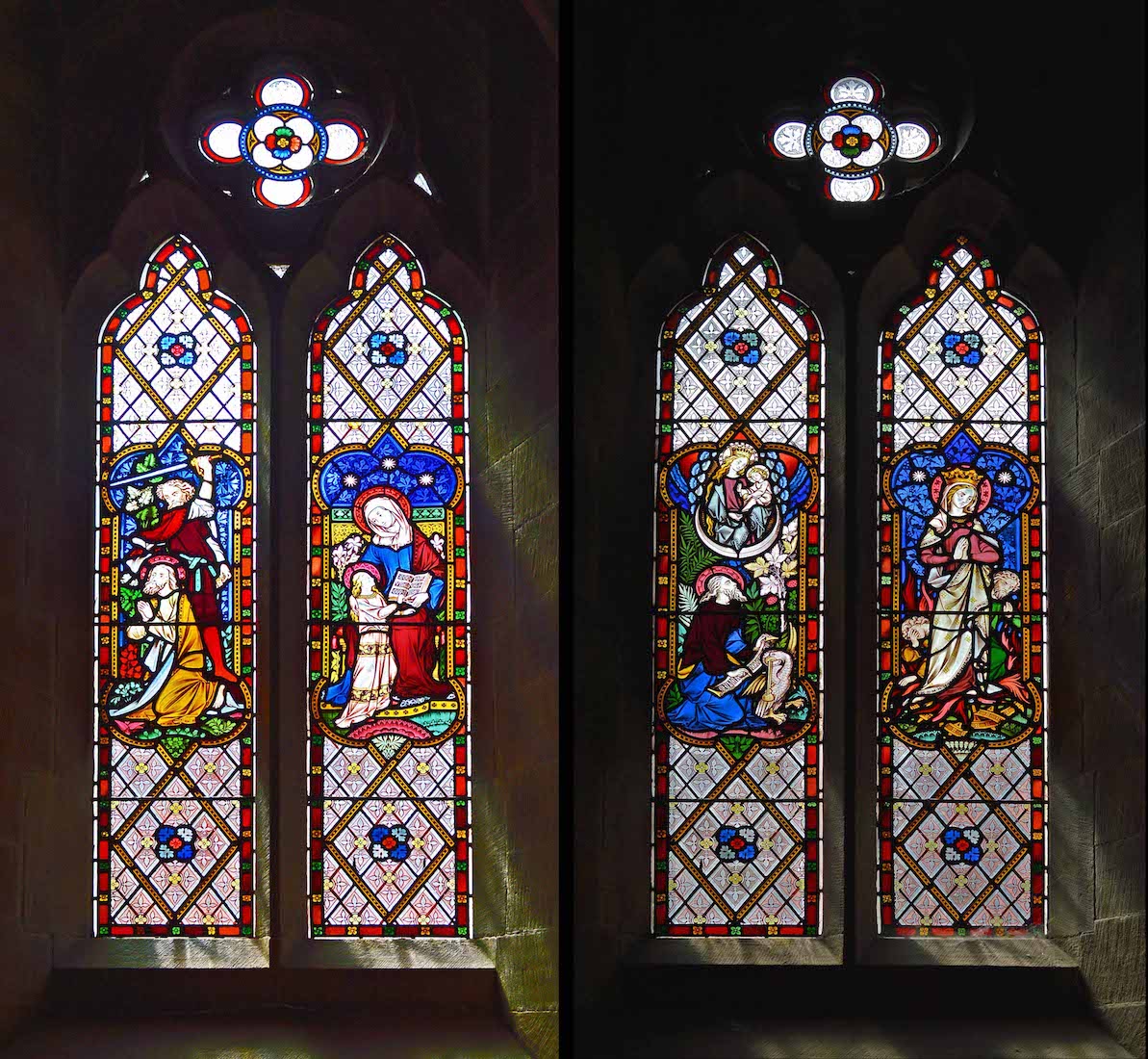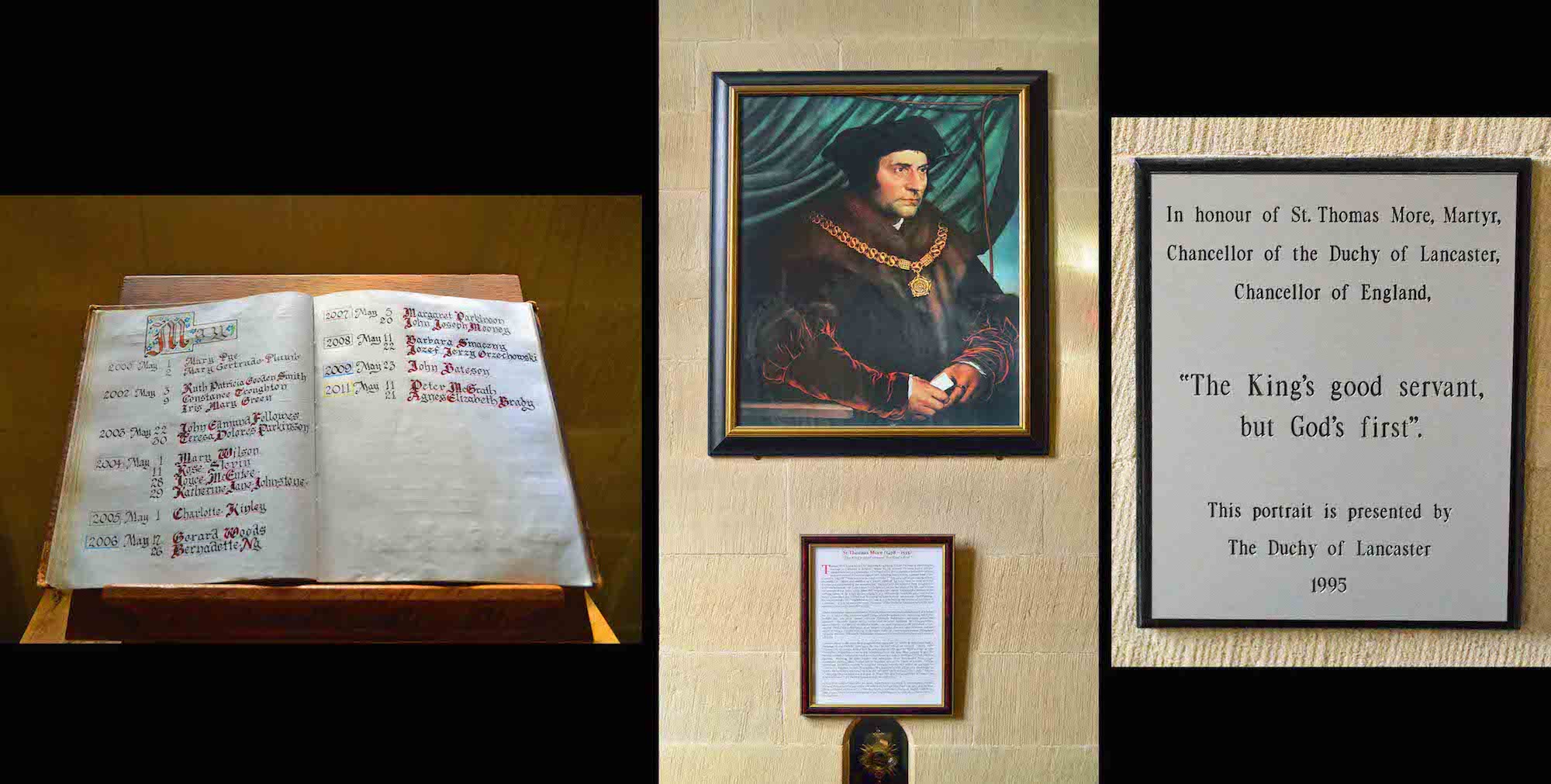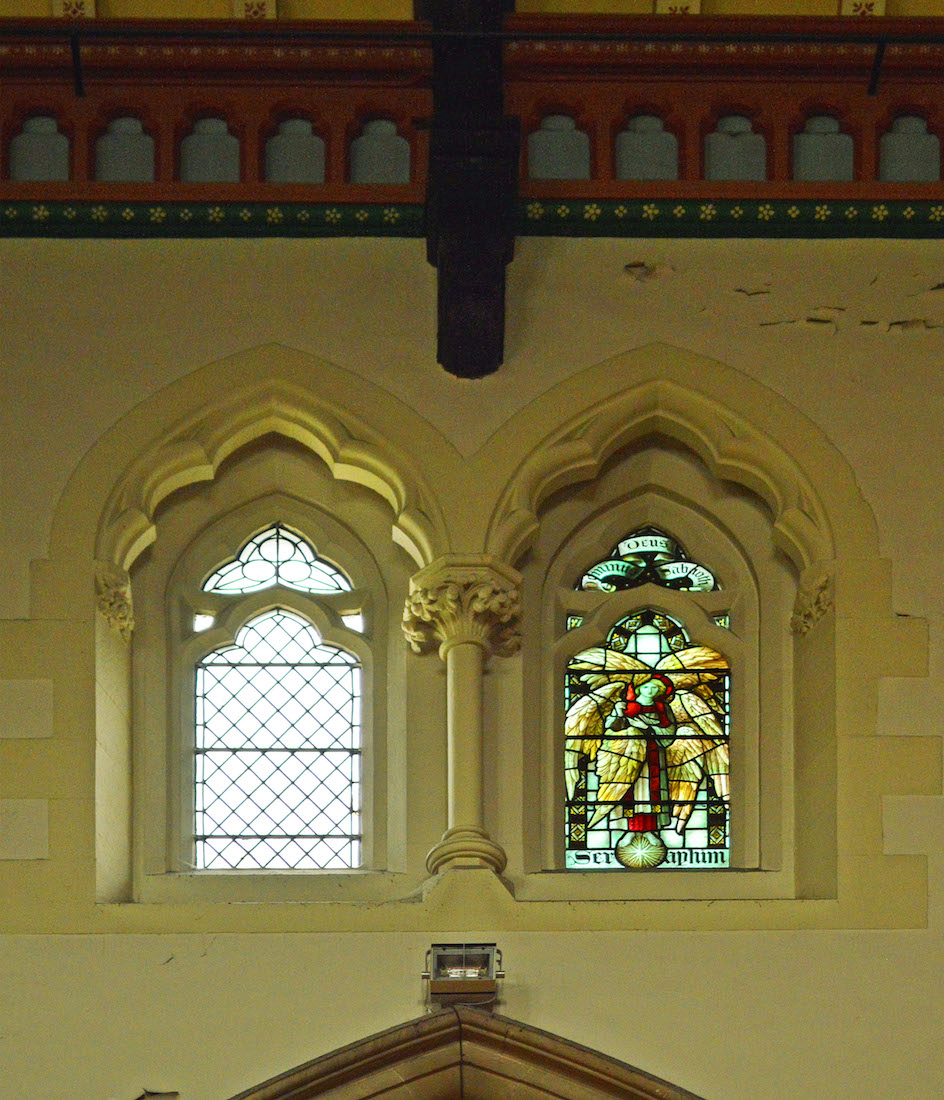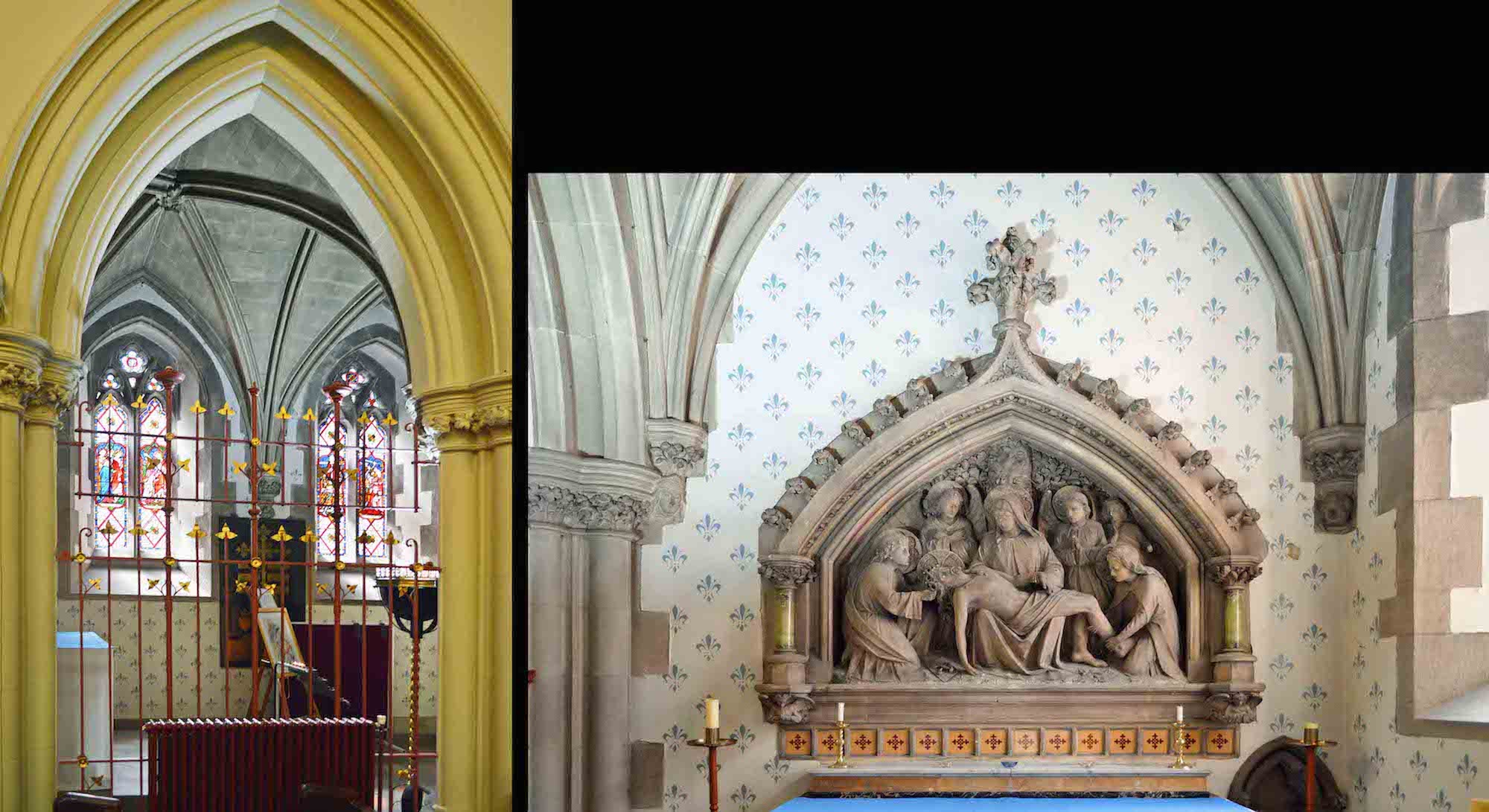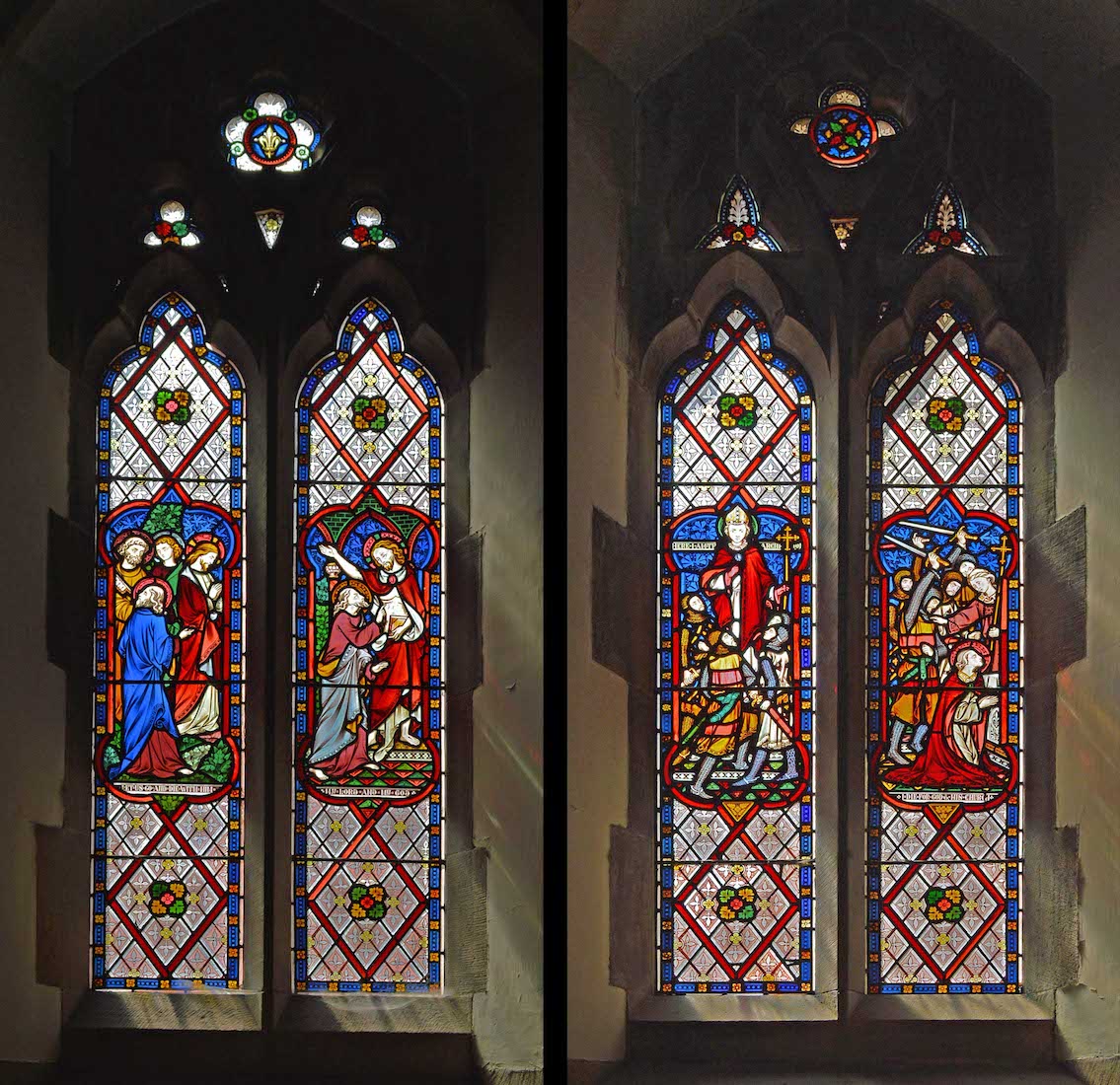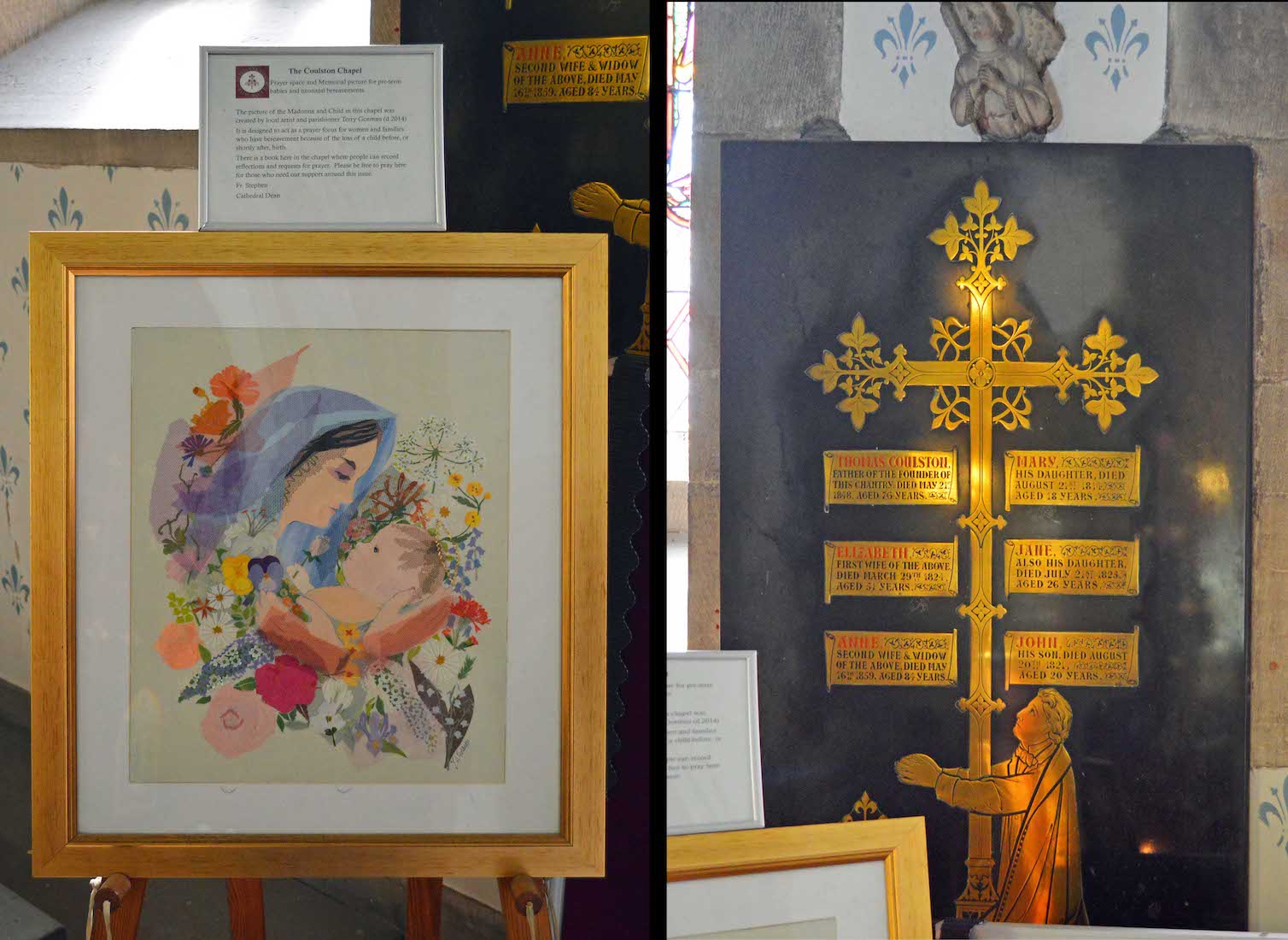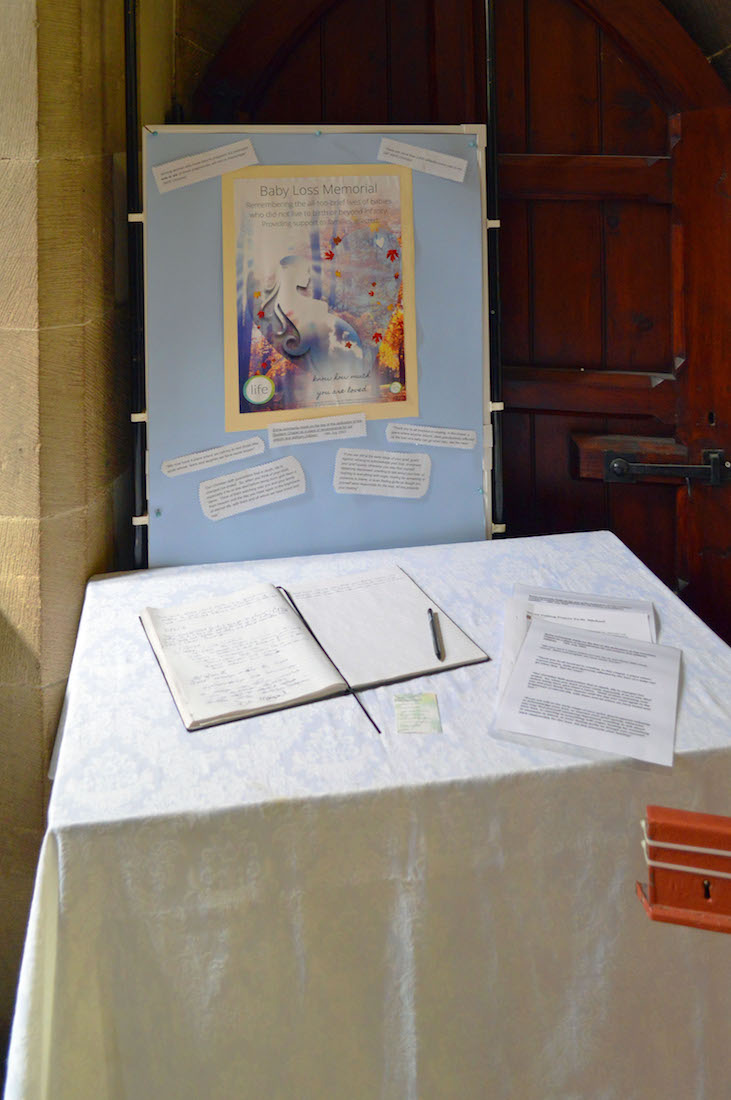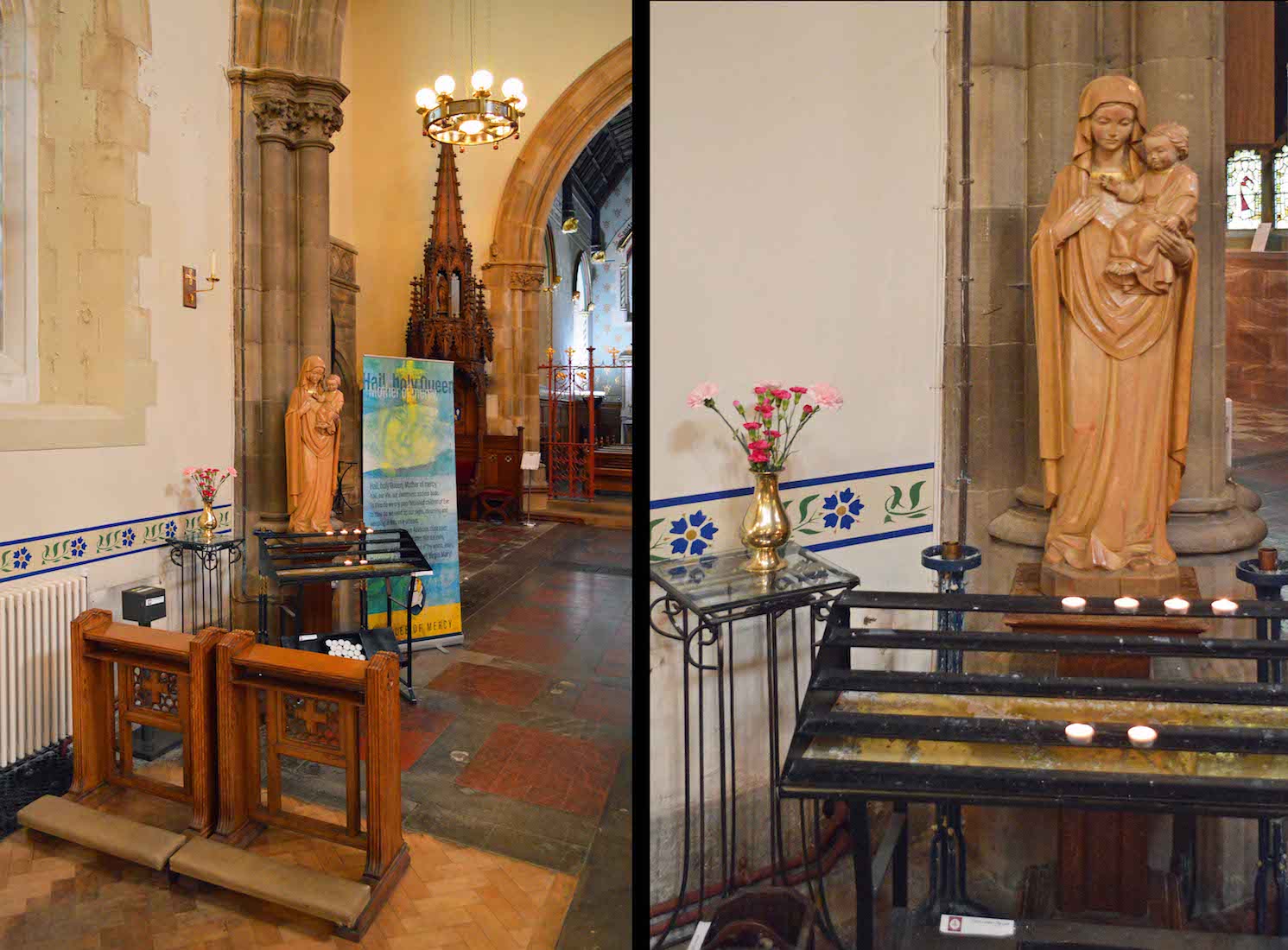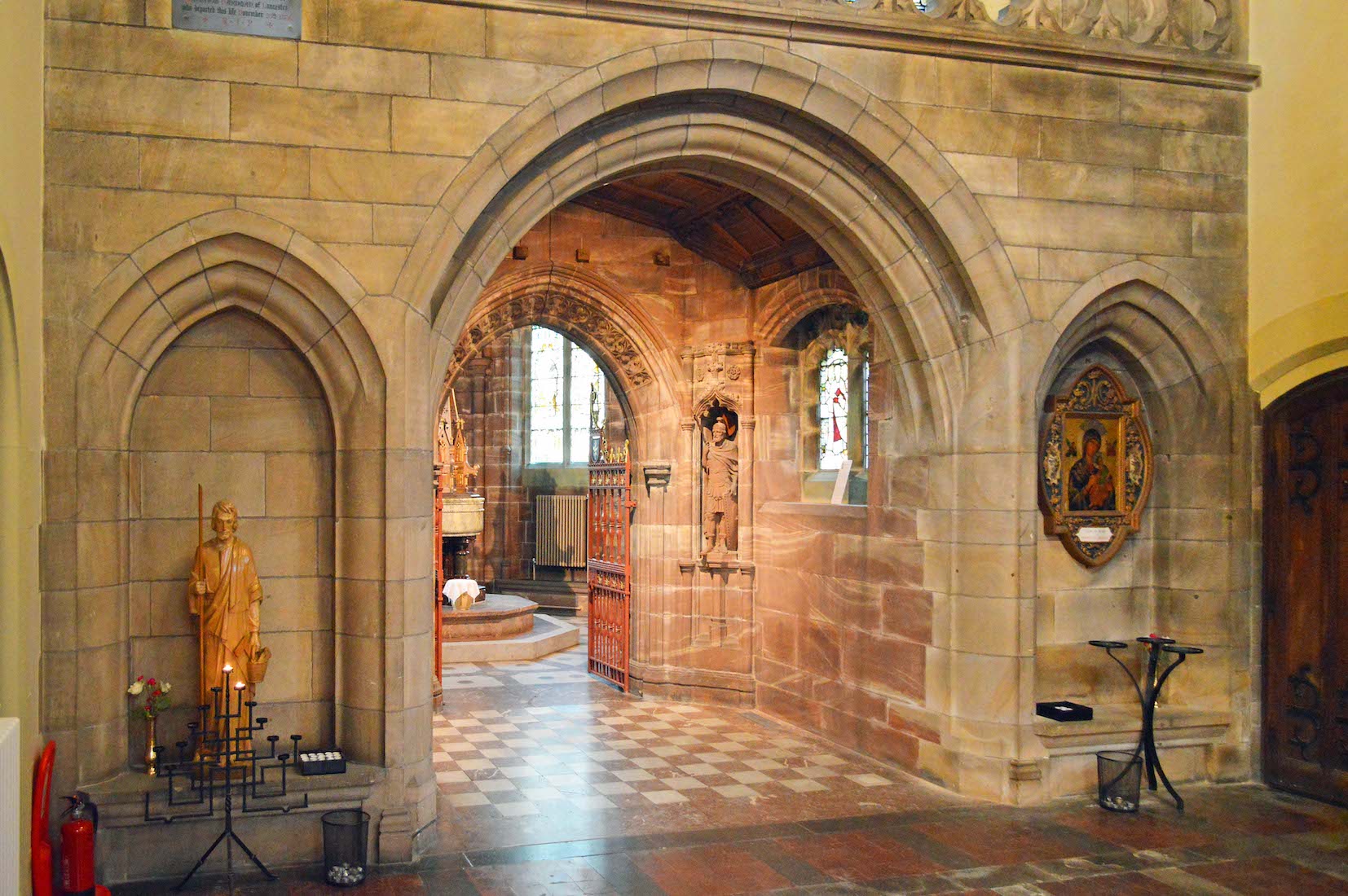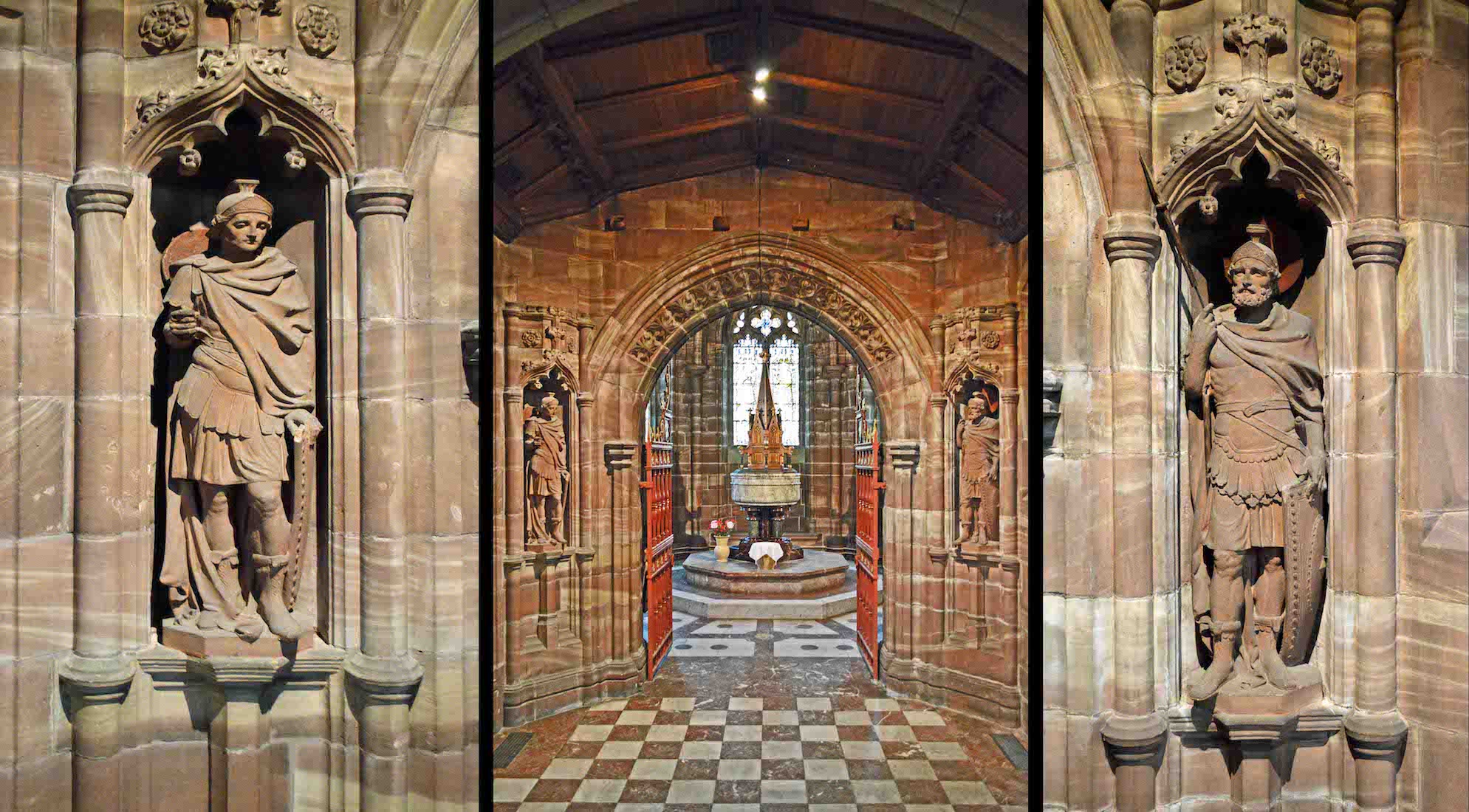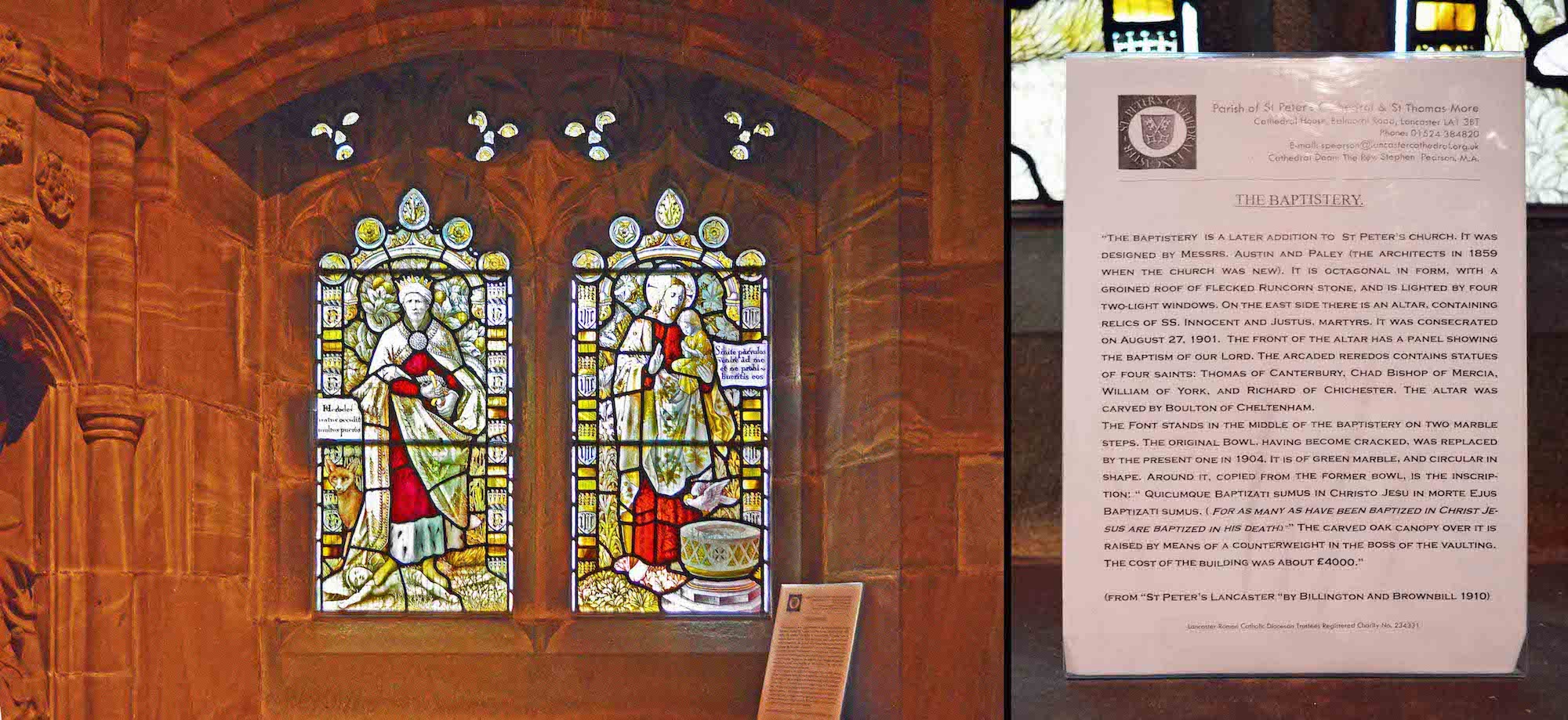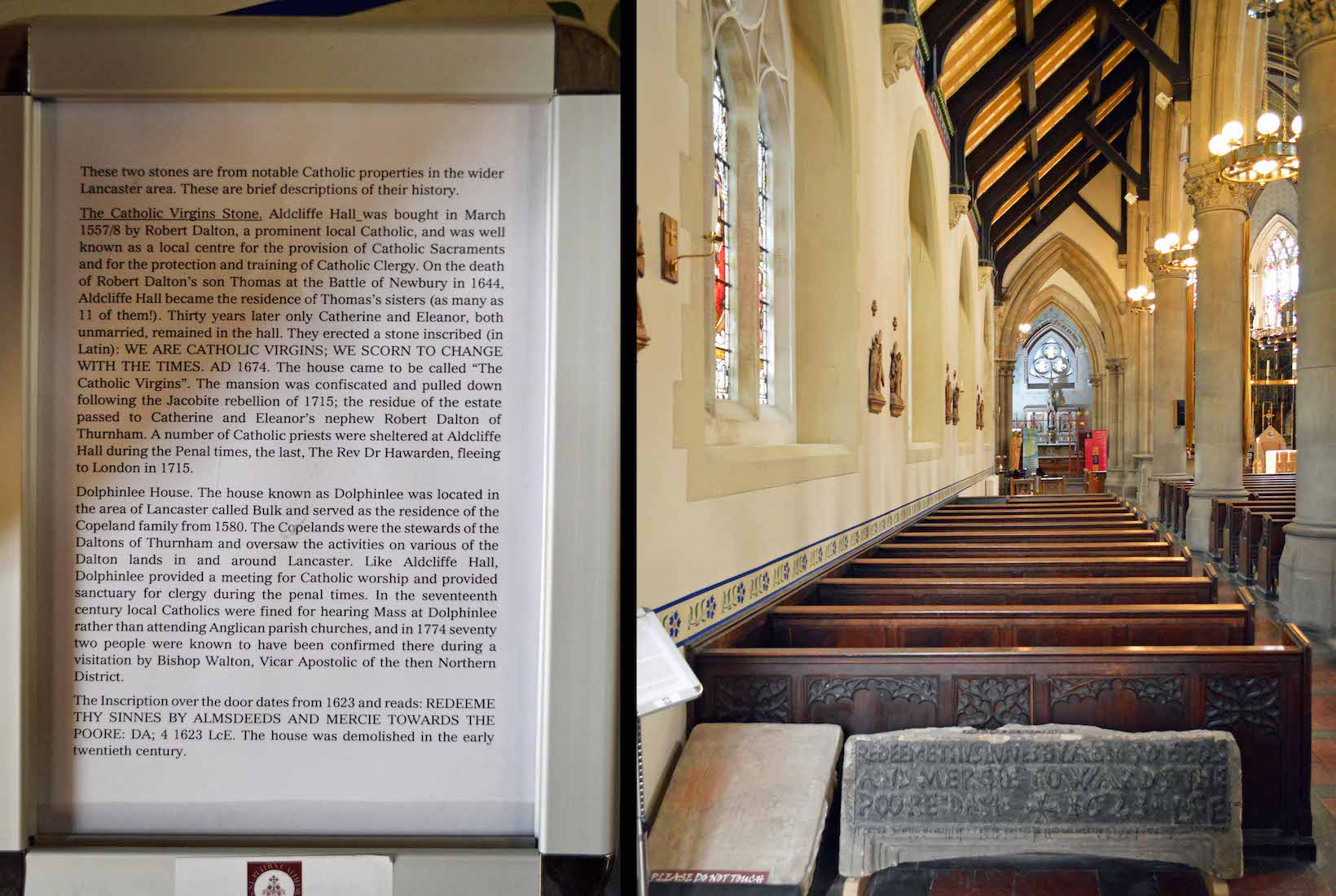
From here we can look right down the length of the North aisle. Behing the closest pew are two old stones, and an explanatory sheet. The stone at left is The Catholic Virgins’ Stone. It was a stone erected by two unmarried ladies, Catherine and Eleanor, of Aldcliffe Hall, inscribed in Latin: ‘We are Catholic virgins; we scorn to change with the times. AD 1674’. The house came to be called ‘The Catholic Virgins’. PLAN
22. OLD STONES
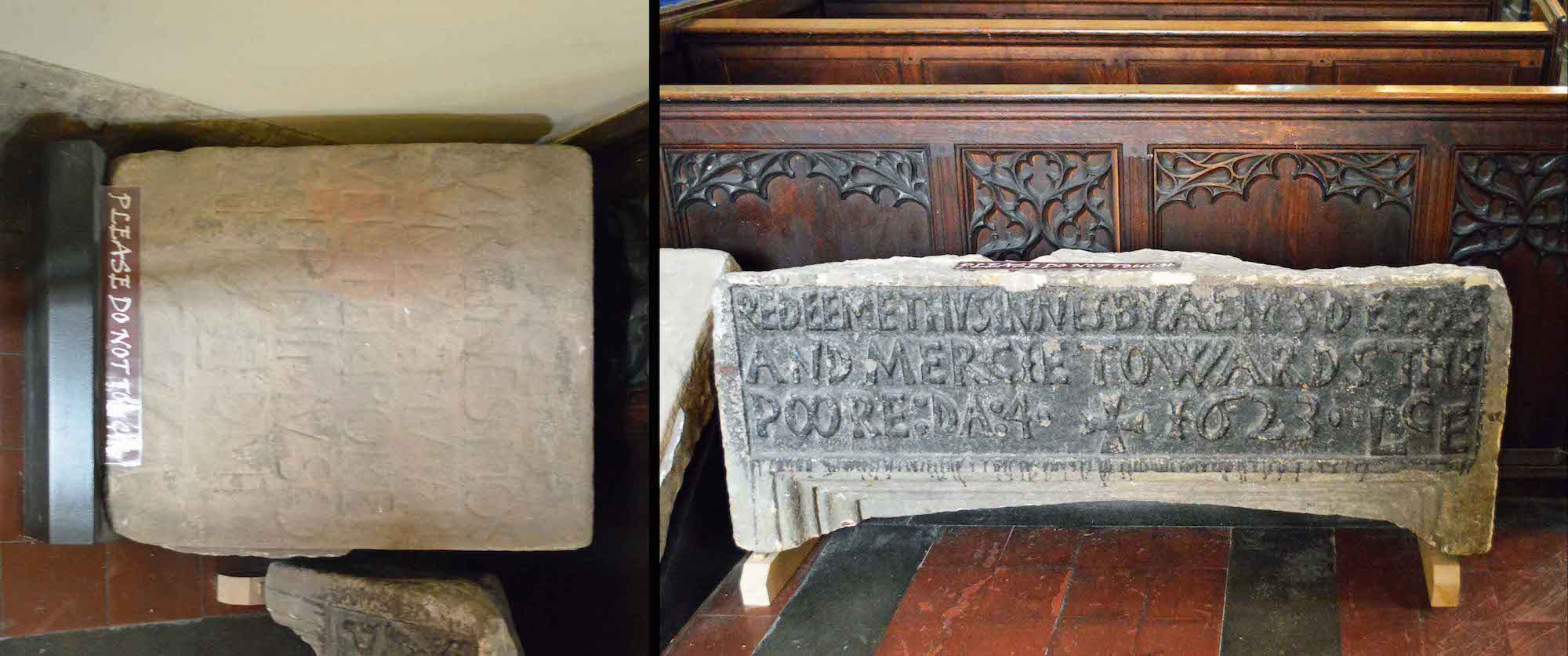
The stone at right comes from over the door in Dolphinlee House, located in Lancaster, and a residence from 1580. This provided a meeting place for Catholic worship, and provided sanctuary for Catholic clergy during penal times. The inscription on this stone dates from 1623 and reads: ‘Redeeme Thy sinners by almsdeeds and mercie towards the poore: DA; 4 1623 LcE.’ The house was demolished in the early twentieth century.
23. NORTH SIDE OF NAVE
Time now to explore the rest of the nave. There are in fact four stained glass windows along the North wall. Between these are pairs of scenes forming part of the stations of the cross. The ceiling has patterning similar to that of the central nave, only easier to view.
24. NAVE NORTH WINDOWS
Along the North side of the church are stained glass windows depicting the life of St Peter. They were made by Hardman of Birmingham. At the top of the first window St Peter is shown with two churches at his feet: St Peter’s Basilica in Rome and St Peter’s Cathedral, Lancaster – a reminder of the universal nature of the Catholic Church. Below the scene on each lancet is a textual description of the event.
25. SOME STATIONS OF THE CROSS
The stations of the cross are found in every Catholic church and cathedral. They illustrate the journey that Jesus took from that final judgement with Pilate to the events of the Cross. They are useful for reflection and meditation on the events of the Passion of Christ, particularly around Easter time. These are nicely carved wooden images.
26. SOUTH NAVE WALL TO THE EAST
Having reached the East end of the North nave, we now cross over to the other side. A grand piano stands in front of the first of two chapels on this side. We shall come back later to the small shrine just visible at extreme left.
27. SOUTH AISLE
Looking West along the South aisle we see that there are no windows in this side wall, but rather, openings into two side chapels.
28. WHITESIDE CHANTRY CHAPEL
The first of these side chapels is the Whiteside chantry, founded by James Whiteside. The central column has an interesting capital. As well as the usual floral decoration, an angel looks out prayerfully across the chapel. The chapel contains a beautifully carved reredos depicting Jesus’ agony in the garden.
29. CHANTRY WINDOWS
There are two windows in the Whiteside Chantry Chapel. The left-hand window in this chapel depicts the martyrdom of St James the greater, patron of the Whiteside family. Other scenes show St Anne teaching her daughter Mary, St John’s vision of the woman in Revelation 12, and St Catherine standing with her executioners behind.
30. CHAPEL ITEMS
The chapel contains several items of interest. At left is an illuminated ‘Year’s Mind’ – a record of the names and dates of parishioners who have died. The painting is of martyr St Thomas More (1478 –1535), famous for his saying ‘I die the King’s good servant, but God’s first.’ He bravely opposed King Henry VIII on the issue of dissolving his marriage to Catherine of Aragon. The portrait was presented by the Duchy of Lancaster in 1995.
31. CLERESTORY STAINED GLASS
We leave the Whiteside Chapel and return to the nave, looking up at the clerestory windows. As previously mentioned, most of the clerestory windows are clear glass, but this Easternmost window on the North side is an exception. It pictures an angel with an abundance of wings. The angel holds a flaming heart – a Sacred Heart image. The text above is ‘Dominus Deus Sabaoth’ which translates to ‘Lord God of Hosts’.
32. COULSTON CHAPEL
The second chapel was donated in memory of Thomas Coulston. The reredos is a pietà, showing Mary holding the dead body of her Son after he had been taken down from the Cross. Thomas Coulston, of Well House, died in 1856, aged 46. He was a benefactor of the church, convent and poor schools, in which for 28 years he constantly taught on Sundays.
33. CHAPEL WINDOWS
This chapel too has two stained glass windows. They depict St Thomas the apostle meeting the risen Jesus, and St Thomas of Canterbury at his martyrdom. Both Thomases were patrons of the Coulston family.
34. CHAPEL ITEMS
In the Coulston Chapel is a touching tapestry of the Madonna and Child created by Terry Gorman who died in 2014. It is designed to act as a prayer focus for women and families who have experienced bereavement through the loss of a child before, or shortly after, birth. There is also a book for prayer requests. The gold and black wall plate is a memorial for Thomas Coulston and his family.
35. PRAYER REQUESTS
Here is the book of prayer requests, with some displayed requests. Mothers suffering bereavement would find consolation here.
36. NORTHEAST NAVE MADONNA AND CHILD
We leave the Coulston Chapel, and make our way back across the nave to the front of the North aisle. Here there is a lovely carved figure of the Madonna and Child – by the same craftsman who carved the stations of the cross?
37. NORTH TRANSEPT
Just beyond the Madonna and Child shrine is the North transept. From within, the transept itself is almost absorbed by the North side aisle, the North wall consisting of these front three arches in stone. But through the central arch is the link to the baptistery. We notice that the link has a small two-light stained glass window.
38. TO THE BAPTISTERY
Before we enter the baptistery, we check out the two small outer arches. The figure at left carries a staff, a square and a bag of tools. He is unidentified, but we note that the disciple Thomas was by profession a builder. Further, we have already noted that St Thomas is a patron of the Coulston family. At right is an ornately framed icon of ‘St Mary – our Lady of Perpetual Succour’. The word ‘succour’ has been translated as either ‘sorrow’ or ‘help’.
39. INNER DOOR TO BAPTISTERY
Passing through the transept arch brings us into the link, and before us is another similar arch leading directly to the baptistery. For some reason, there is a Roman centurion standing guard on either side.
40. SMALL WINDOWS
Also in the link is the small pair of lancets, and information about baptism and the baptistery. The window depicts two opposite attitudes to children: Herod in anger slaying all the children under age two, and the Risen Christ blessing a child, with a dove and a small font in the forground.


